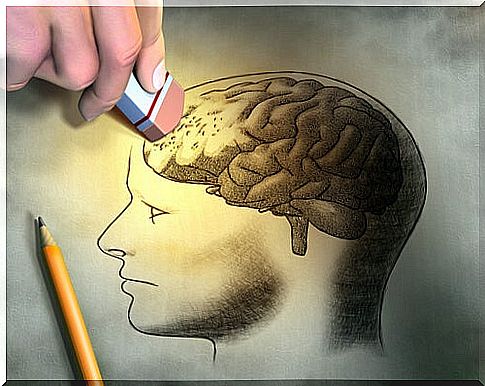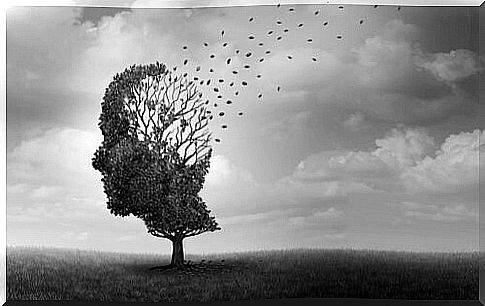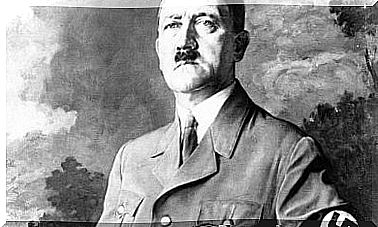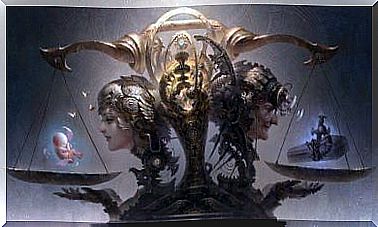Frontotemporal Dementia: Symptoms, Diagnosis And Treatment

When we talk about dementia we usually think that it can only affect older people. However, there is not just one type of dementia, but there are several. Among them, some can affect younger people such as early-onset Alzheimer’s disease and frontotemporal dementia. We will focus on the latter throughout the article.
Frontotemporal dementia, or frontotemporal lobar degeneration, is a generic term that refers to a group of rare disorders that mainly affect the frontal and temporal lobes of the brain – areas associated with personality, behavior and language – and that it is also characterized by losing neurons.
Thus, some people with this type of dementia often experience drastic personality changes and sometimes behave inappropriately on a social level. They can even become very impulsive, emotionally indifferent or lose certain abilities related to language or movement. The age of onset is usually between 40 and 45 years old.

Frontotemporal dementia
In frontotemporal dementia, areas of these lobes contract, that is, atrophy. In this way, depending on the region of the brain affected, the signs and symptoms vary.
Notably, frontotemporal dementia is often misdiagnosed as a psychiatric problem or as Alzheimer’s disease. However, frontotemporal dementia tends to appear at an age, as we have seen previously.
Researchers haven’t identified a single cause for this type of dementia, but they have some ideas. For example, some brains develop abnormal protein structures known as Pick’s bodies that play an important role in this disorder, as they affect the functioning of the brain.
However, researchers still do not know why these proteins are developed or how to prevent them. There are also no other known risk factors that can help prevent this dementia.
Symptoms of frontotemporal dementia
The signs and symptoms of frontotemporal dementia can vary greatly depending on the individual. Researchers have identified several groups of symptoms that often appear together and are dominant in groups of people with the disorder.
Behavior changes
The most common signs and symptoms of frontotemporal dementia involve extreme changes in behavior and personality. The most characteristic include the following:
- Inappropriate actions.
- Apathy or lack of motivation and desire.
- Speech and language related problems.
- Loss of empathy and other interpersonal skills.
- Changes in eating habits, mainly eating excessively.
- Lack of judgment and inhibition.
- Lack of awareness about changes in behavior or thoughts.
- Repetitive compulsive behavior.
- Decrease in personal hygiene habits.
- Oral exploration and consumption of inedible objects.

Speech and language disturbances
There are two types of primary progressive aphasias considered frontotemporal dementia: semantic dementia and grammatical aphasia.
- Semantic dementia or semantic variant primary progressive aphasia. It is about the presence of anomie or the difficulty in naming objects. In fact, they often replace a specific word with a more general one and even lose knowledge of the meaning of the word.
- Progressive agrammatic aphasia : This is a primary progressive aphasia characterized by non-fluent and hesitant speech. Thus, the speech seems telegraphic, due to the misuse of pronouns and some errors in the construction of the sentence.
Movement disorders
The rarer subtypes of frontotemporal dementia are characterized by movement problems; similar to those associated with Parkinson’s disease or amyotrophic lateral sclerosis. Among its main signs and symptoms we highlight:
- Shaking.
- Muscular weakness.
- Difficulty to swallow.
- Muscle spasms.
- Poor coordination.
- Rigidity
Diagnosis of frontotemporal dementia
There is no single test that can identify frontotemporal dementia as such. That is why doctors try to identify certain characteristics and exclude other possible causes.
This type of dementia can be especially difficult to diagnose, especially in the early stages, as its symptoms overlap with those of other conditions quite often.
In any case, various tests can be performed that help in the elaboration of the diagnosis :
- Blood tests – to rule out that symptoms are not caused by a different condition, such as liver or kidney disease.
- Neuropsychological tests : to assess reasoning and memory skills.
- Brain scan : to identify any visible abnormalities that may be causing the observed signs and symptoms.
- MRI : to collect more detailed images of the brain.
- Positron emission tomography : to visualize the metabolism of blood sugar in the brain and thus identify brain abnormalities of the frontal or temporal lobe.

Treatment of frontotemporal dementia
Unfortunately, frontotemporal dementia cannot be cured. There is also no effective way to slow its progression. The only possible treatment focuses on symptom management.
For example, to reduce the behavior problems associated with frontotemporal dementia, doctors may prescribe antidepressants and to combat behavior problems, antipsychotics. Although it is true that special care must be taken with this type of medication, because its side effects include an increased risk of death in patients with dementia.
In some cases, frontotemporal dementia can also be treated with therapy. For example, when the person experiences language difficulties, speech therapy can help them learn alternative communication strategies.









